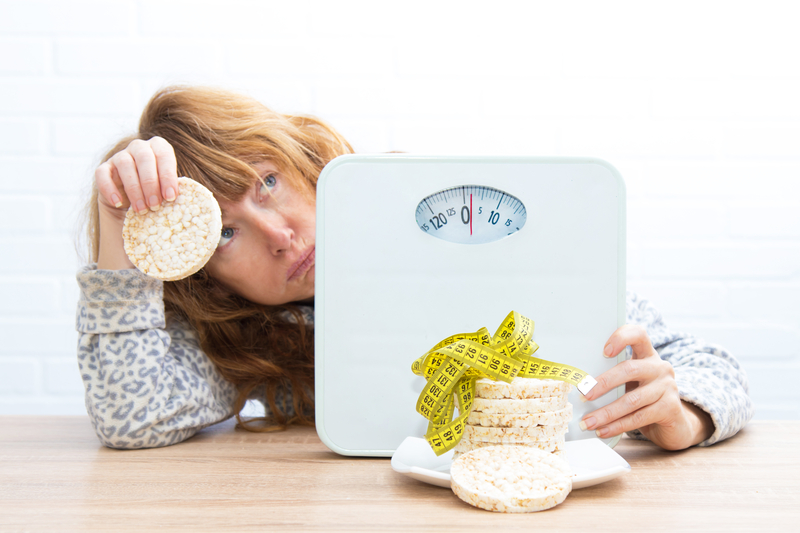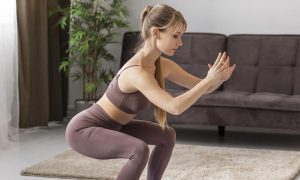Too much stress has come from the misinformation out there about how to lose weight or maintain a healthy weight. This information deluge on diet tricks is heightened in the dance world.
As a dietitian for dancers for the past 11 years, and a former professional dancer myself, I’ve seen the real-life damage that these internet and fad diets do to a dancer’s instrument and mental state. I’ve worked with numerous dancers and athletes to undo fad diet damage and help get them on track with a way of eating that not only supports their energy levels and health, but also helps achieve a body that’s competitive for scholarships and contracts. I know that it’s possible to achieve results in a healthy way with a little thought and preparation. For a deeper dive into the different fad diets, check out the Dance Informa articles linked below. As we move into the holiday season and new year, I want to highlight here the top tricks that I know work.
Smaller, more frequent meals and snacks
The first, and arguably most important, diet fad to avoid is going for too long without eating. I know that intermittent fasting is popular, but it backfires in the long run with added weight gain over time and compromises a dancer’s muscle tone, endurance and injury risk. Dancers will actually have an easier time losing fat but keeping muscle if they eat strategically 6+ smaller, more frequent meals/snacks per day based on their energy needs.
For example, if dance class is in the morning, eat a strong breakfast with the types carbohydrates that improve weight management such as rolled oats, whole grain toast and fruit. Studies show that people who eat breakfast have an easier time managing weight over time. When dancers switch to eating about every 3 hours with portion sizes crafted to meet their energy needs for the next 2-3 hours after that meal, it supports maintaining or building muscle tissue. It also reduces the desire to overeat later in the day because dancers aren’t famished. People tend to make smarter food choices when they aren’t starving. It’s very hard to avoid tempting cookies and fried foods when you haven’t eaten in six hours.
Focus on fiber
The second most important diet trick is to fill up on high fiber foods. These fill you up for less calories (and less money usually) but are packed with nutrients. Fiber is only found in plant foods, so make beans, lentils, peas, edamame, fruits, vegetables (particularly leafy greens) be the stars of your dietary plan. Let go of this outdated high protein, low carb fad. Of course, dancers need more protein than their non-active friends, but that doesn’t mean you eat excess protein with this mistaken belief that it will magically help with weight loss. What really works is filling up on a wide variety of plants. This takes a bit of planning and does require some food prep, but once you get used to bringing a container of carrots and apples for snack, having a large salad as part of your overall lunch and having 1-2 servings of roasted or steamed veggies for dinner, it will feel like second nature. The trick is not overdoing the oil, cream dressings or cheese as toppings for veggies. A little goes a long way.
Eating soups regularly has been shown to fill up study participants with less overall calories. Many soups can be nutrition powerhouses with beans and lentils, greens, carrots, whole grain pasta or wild rice like in a Minestrone soup, for example1. Just limit the creamy soups.
Sugar
Too much refined sugar can knock a hole in even the most carefully planned diet. Keep added sugars in beverages, baked goods and candy to occasional treats, not daily occurrences. (I’m looking at that fancy coffee drink that at only 16 ounces has twice the sugar as a king sized Snickers.) Many fad diets include fruit in the “sugar” category, and this couldn’t be more false. While fruit does have fructose (a type of sugar), it is also a good source of fiber and vitamins. Bottom line, eat fruit to fill that sweet craving while filling up on fiber, and keep refined sweets to occasional treats. Eating fruit can be a great way to have a filling snack between meals. It’s also hydrating.
Smart dietary fats
Back in the ‘80s and ‘90s, low fat diets were popular. These types of fad diets still come back in different forms today. They didn’t work mostly because people didn’t really eat as low fat as they thought they were and because fats were often replaced with sugars in the American diet at that time (and still today). Studies show that a diet with primarily unsaturated fats, found in plants like nuts, seeds, avocados and olives, for example, is better at helping people lose and maintain weight than a diet with saturated fats like butter, pork, beef, palm oil and even too much coconut oil. We should all be avoiding trans fats in foods like shelf-stable baked goods (like Twinkies, for example).
I tend to recommend about 25 percent of total calories from mostly plant-based fats for my clients, but it’s been shown that even moving from a 38 percent fat saturated fat diet to a 28 percent unsaturated fat diet will result in weight loss1. You do not have to fear or avoid all dietary fats to have a professional-level dancer body; you just have to make smarter choices most of the time. Meaning have a palm full of nuts every day. Cook with a teaspoon of olive oil per serving, add seeds to your recipes and smoothies, add avocado to your meals. Avocado is actually high in fiber anyway. Enjoy plant-centric fat sources, and minimize saturated fats in butter, cheese and animal meats. I will never tell anyone to avoid grandma’s pie. You must eat her pie.
Additional strategies shown to work
Getting adequate sleep is essential. It has been shown that even a small sleep deficit can lead to increased caloric intake during the day and weight gain over time. Another key strategy is to have a solid hydration plan. Don’t just say you’re going to try to drink more. Make a specific goal such as 1-2 cups before each meal and 1-2 cups between meals and snacks. Adequate water intake and smart beverage choices can make or break a diet plan. Many sodas can have 20+ spoonfuls of sugar in them. Some studies show that hibiscus tea, green tea and ginger can aid in weight loss. Whether they do or do not, they’re certainly delicious and healthy.
Links to take a deeper dive into Dance Informa’s past articles on fad diets:
How eating more, not less, leads to a healthy dancer weight
Intermittent Fasting: What dancers need to know about this latest diet trend
Why energy balance is the underappreciated secret to healthy weight and more energy
Keto Concerns: Is Keto Diet unsafe for dancers?
Paleo — good diet for dancers? Nutrition experts weigh in
Sources:
- Greger M. How Not To Diet: the groundbreaking science of healthy, permanent weight loss. Flatiron Books NY, 2019

By Emily C. Harrison MS, RDN, LDN of Nutrition for Great Performances.
Emily Cook Harrison MS, RD, LD
Emily is a registered dietitian and holds both a bachelor’s and master’s degree in nutrition from Georgia State University, USA. Her master’s thesis research was on elite level ballet dancers and nutrition and she has experience providing nutrition services for weight management, sports nutrition, disordered eating, disease prevention, and food allergies. Emily was a professional dancer for eleven years with the Atlanta Ballet and several other companies. She is a dance educator and the mother of two young children. She now runs the Centre for Dance Nutrition and Healthy Lifestyles. She can be reached at emily@dancernutrition.com
www.dancernutrition.com















